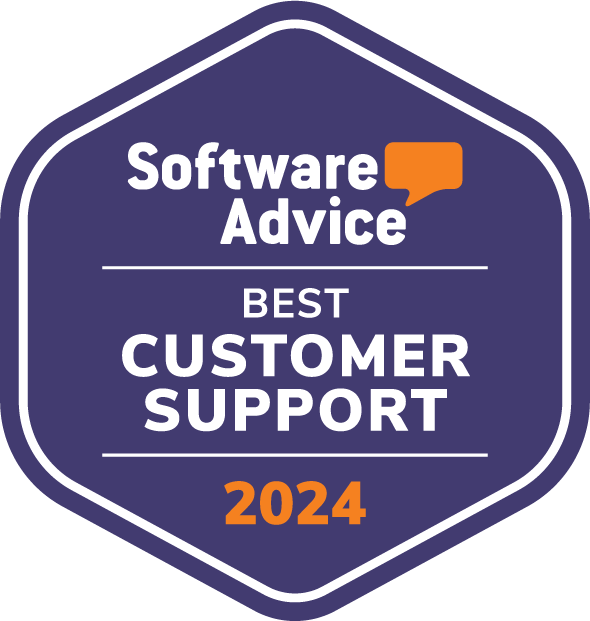1. What is automation in the HVAC industry?

Simply put, automation is a digital process where repetitive tasks are assigned to a computer program. More often than not, people think of conveyor belts and assembly robots when they picture how automation looks like but the truth is much subtler than a Jetsons fantasy. For example, the Home Depot offer email you got this morning after you checked a new fan adaptor?
Probably automated. The Facebook joke 3M made this morning about traffic? Definitely automated. The terrible reply your review got after you complained about a service? No, that was all too human.
Jokes aside, what do the first two instances have in common? They both come down to simple workflows. The email was probably triggered by you browsing the fans section since designers believed a reminder would serve you well.
The post was most likely a part of an extensive brand exercise, scheduled in advance to go out during people’s commute when they’re more likely to identify with jokes about traffic.
Of course, an actual human still has to write both the email and the jokes then think of a workflow that will appeal to their target market, but if you look closely, you’ll notice the fundamental difference between what the algorithm does and the human’s task: the former is mechanical, the latter is creative.
What the algorithm does is take a repetitive action, virtually identical in every scenario, and replicate it. This clears time for humans to come up with strategies employing these actions which require advanced cognitive functions that are still in the realm of science-fiction for robots.
The practice is a lot more pervasive than you’d think. It’s not that automation has eliminated office jobs, rather it has automated the chores that no one enjoys. In the HVAC industry, these can be anything from calling customers that their appointment has changed and having to deal with them ranting on the phone or emailing them about reviews.
Why not let customers book their own appointment with a booking portal on your website when they receive the automated notification that their technician can’t make it or just let the system take care of your review strategy for you?
Experts already imagine a world where heating and ventilation installs can notify your company automatically when there is a significant change in air composition (like a carbon monoxide leak) and although manufacturers aren’t quite there yet, there’s no reason for you not to get a head start with a great automation HVAC service software.
2. I already have an HVAC service software. Does this mean my HVAC company is automated?

Not necessarily. When was the last time your software released an update? Or does it ask you to switch between 5 screens to match your information with that of your accounting system? Maybe your software is little more than a mobile app with a desktop interface. If you’ve answered any of these affirmatively, you don’t have an automated HVAC business.
Good news is that you’re on the right path. You’ve realized that software is key to running a successful company and achieving sustainable growth but now it’s time to take this to the next level. You’ll know that you’ve achieved your goals when your service reminders go out on their own at their appointed time and with personalized tags (no “Dear Customer” anymore, it’s always “Dear Mrs. Smith” now).
Your techs can also send digital estimates on the spot and have customers sign then and there, while your calendar only needs a supervisor to input basic information.
This gets turned into location-optimized work orders rather than a whole team just to schedule appointments. There are so many other workflows that are simply not possible with a simpler HVAC service software.
3. What are the benefits of true automation software for an HVAC company?

We’re glad you asked that. At the end of the day, any HVAC service software is an investment and you need to make sure you’re getting your money’s worth out of it. Luckily, there are many benefits so to make this easier, we’ll break it down by business area:
3.1 Automated communications will improve your HVAC digital marketing strategy.
We’re going to start with digital marketing because it’s an area that most HVAC companies neglect in favor of printing flyers and mailing them around the neighborhood. That might have been the best way of reaching customers a few years ago but these days, if someone needs an air conditioning repairman, they won’t run to their mailbox.
They’ll take out their phones and google it. Digital marketing not only builds your brand but ensures you’re there amongst the first results.
Additionally, great HVAC service software will help you stay in touch with your customers and anticipate their needs while building a real connection. Many think it’s all about sending a newsletter once a month to your whole list of contacts but the only thing that will do is ensure your emails end up straight in the bin, unread, including the ones that are important (like service reminders).
The right way to do it is to start with a properly organized customer database software where you can sort through your contacts, identify which ones are domestic and which are commercial (since you won’t be advertising the same service to both) or another segmentation principle, then tailor your message accordingly.
It’s important to set goals, especially when it comes to digital marketing. For example, if you do want to be on that first page of search results, you need to make sure you’re sending your regular review requests to the right people and building your profiles on review websites. At the end of the day, it’s not just about acquiring new customers but also keeping your old ones loyal and what better way to do this than through building a relationship?
Learn more about how to achieve HVAC marketing ideas!
3.2 An increase in reliability will make you a more attractive prospect for HVAC maintenance contracts.
You know you’re a reliable business. You trust your technicians to do a job fast and to do it well. But if someone asked you to prove it and tell them your exact first-time fix rate, you’d probably be stumped. Don’t worry, it’s not unusual amongst HVAC companies. It comes down to your software and its scheduling and reporting capabilities.
First and foremost, HVAC maintenance agreements (or service level agreements) are part of commercial contracts that more often than not require you to send in a proposal. This proposal needs to include how you plan to manage the increased workload and guarantees of your reliability. It’s one of the main catalysts of HVAC managers investing in software because it’s nigh impossible to keep track of a commercial service schedule without an HVAC maintenance agreement software to back you up.
Planned preventive maintenance is the name of the game in this case and the main benefit of automation software will be the ability to set notifications and breach prevention protocols.
When drawing up that proposal we mentioned, you can use this as proof that you’re ready to handle a maintenance contract if you happen to win the tender. Mass scheduling should also be included, as a truly automated HVAC dispatch software should allow you to set-up appointments in bulk without you having to input the information for each and every one.
If you’re not after HVAC maintenance contracts, then think about how often your regular domestic system needs to be serviced. To ensure they’re running at optimum capacity and not inflating energy bills, homeowners are looking at a biannual check-up, one in spring and one in fall.
This means that service reminders should be a big part of your business and a way of earning a guaranteed income, regardless of market ups and downs. Combine this with your marketing automation and you have a fool-proof workflow that informs your technicians of the work order, keeps your customer in the loop with regular notifications, and goes straight to your profit line. This is true HVAC automation!
Learn how to win more contracts with HVAC maintenance agreement software!
3.3 Attract and retain HVAC technicians.
Attracting – but most of all, retaining – skilled technicians is a big topic in the HVAC industry. Hiring has never been an easy thing to do. From finding the right fit for your company to making sure they stay with you and not run to the competitor first chance they get, HR managers in HVAC have their work cut out for them.
There are countless “5 steps to retaining your techs” articles going around with tips that are pretty self-evident (offer learning opportunities, be clear on advancement chances, etc.) and they’re all fine reads, but the opportunity to learn something new once in a while won’t keep the best techs on your team.
The working environment is key to attracting and retaining HVAC technicians. Just because a company is making money and paying well, for example, doesn’t mean that its employees are the happiest. The day-to-day life, however, is what really makes an impact on employee wellbeing. And it’s not just techs that suffer the consequences of work processes that haven’t been thought out but admin staff too.
An often overlooked benefit of automation is the improvement in the overall quality of work life. We mentioned it at the start of this article but the purpose of automation is to eliminate the boring, mundane, and repetitive tasks that no one enjoys doing.
For admin staff, that means no more time wasted on Google maps, calculating how long it takes to get from one place to another, trying to reconcile illegible inventory sheets with actual stock, and back-and-forth emailing over quotes and invoices.
For technicians, it means all they need to do is have their mobile phone or tablet with them and they get notified of everything, including spare parts location, in real-time. So, no more missed appointments and low first-time fix-rates due to lack of parts. Not to mention the advantage of knowing they’re taking an optimized route that reduces their driving time.
All these automation benefits come with great HVAC service software and should be right up there in your recruitment ads. Skilled technicians and young people will be attracted to a company that’s innovative and looking to invest in growth, as well as one that can promise smooth, relaxed work processes without the usual daily grind.
Once recruited, you’ll notice HVAC techs sticking for longer when they realize how much easier it is to work in a truly automated company, making both your investment in HVAC company software and longtime employees worth it.
If you’d like to know more about how to attract and retain HVAC technicians, read our tips!
3.4. Scheduling becomes a breeze.
If you were to take a survey of what is the most difficult part of running an HVAC company, the answer wouldn’t be difficult jobs or making good profits. The fact of the matter is that most jobs will be routine and a well-run company will make money so why doesn’t everyone succeed then?
Scheduling and managing calendars are where a lot of companies fail by alienating customers and running down technicians who end up going to the wrong address or not finding anyone at home.
Scheduling takes on a whole new dimension of repetitive and boring when HVAC companies finally get those sweet maintenance contracts that bring in a steady amount of money regularly, injecting much-needed stability in your cash flow.
Planned preventive maintenance is not something you can do in Google Calendars or some phone app unless you’re ready to sit down and schedule hundreds of jobs for each customer asset then check to make sure you’re not overlapping with other work orders, you’re respecting technicians’ shifts, and staying within budget (this means not making use of too many overtime hours that come at an extra cost).
A benefit of HVAC automation is the ability to mass schedule work orders by inputting a few parameters then letting the system find optimal routes, match technicians’ shifts, and show you an estimated cost before you hit ‘Confirm’. Afterwards, it’s still the system’s job to email customers and other managers, as well as notify technicians.
Having an overview of your schedule on a single screen is also an underrated detail. It brings the advantage of being able to gain an understanding of your company at a glance and the possibility of sharing said screen with other partner companies that need to organize themselves accordingly (an electrical company that does the wiring in locations where you do the ventilation system, for example) or commercial customers that need to present the schedule to other stakeholders.
Transparency and accountability is vital when tendering for contracts and trying to improve daily business processes.
3.5 The ability to provide a superior customer experience.
It’s tempting to think that price is the be-all and end-all decision factor and that regardless of one’s work, the customer is still going to go for whatever is cheaper. But if this were the case, why would anyone ever buy a car over a bicycle? Or go to a fine restaurant rather than a fast-food joint? Both activities end in the same result: you get from point A to point B, and you’re not hungry anymore, respectively.
The difference is in the experience. People are willing to pay for better experiences, and they’re willing to pay a lot. So much so, that a Customer Progress Report by Walker has found that by 2020, experience will overtake price as the key decision factor for the majority.
So set yourself above the fight to the bottom tactic that many HVAC companies fall prey to and use your ability to provide a superior customer experience to set yourself apart (and charge premium prices).
But how do offer this superior customer experience? Just doing a good job is not nearly enough. Even a great job can go unnoticed because most customers, whether they’re domestic or commercial, can’t tell apart a good install from a bad one until it’s too late.
What customers expect these days is what they’ve been taught to expect: instant responses, personalized treatment, and real-time information readily available. In a world of Ubers and JustEats, people have gotten used to being able to get services by just thumbing on their phones for a few minutes.
This means that it’s time for companies to reap the benefits of commercial HVAC software and blow the competition out of the water with their automated customer service experience.
Great HVAC service software will come with an online booking form to help you get those customers who hate making phone calls (and, turns out, there’s so many of them that it’s even got a name; just think of how many customers you might have missed out on if your only contact method is a phone), as well as an automatic email function that keeps them always in the loop with confirmations and appointment reminders.
Another step in the buyer’s journey where many HVAC companies get stuck is estimating. Simply having a PDF is not enough, it should be part of your workflow and your technicians should be able to put an estimate together on the spot, send it to the customer, they put down their digital signature, and your team can get started on the work right away.
None of that going back to headquarters, looking for a working printer, all this while the customer has time to check out your competition. Automation simply removes the friction of certain tasks, creating a smooth, memorable experience that your satisfied customers can then spread the word about. Just don’t forget to automate your review requests!
Learn more about how to provide a superior HVAC customer experience!
3.6 Significantly reduces HVAC inventory management delays and errors.
Any field service business is familiar with the woes of inventory management, and particularly HVAC companies. Growth is always good news but that means you need a proper storage unit or warehouse for your spare parts and other assets, as well as a bigger team. Now that you’ve got 20 or 30 techs running around all day, it only takes a couple of misplaced items and forgotten check-out sheets to turn your inventory system upside down.
The biggest issue is that there’s no inventory accountability. This means that you can’t know who does what so if you notice an issue, you can fix it, but you can’t work towards preventing it if you don’t understand how it happened in the first place. Proper inventory accountability requires you to log every action into a system together with the name of the person responsible.
The consequence is that people can take parts in and out, leave them in their truck, and then never return them. Your office person, who logs those sheets into the spreadsheet, can’t magically know where every part is so they write down the information they’ve received.
Then it’s up to the rest of the team to work with what they think they have which leads either to them discovering that parts aren’t in stock and haven’t been ordered at all or that there’s too many of them in the first place, neither being good for your cash flow.
Investing in an HVAC inventory management software can save you all this trouble. Don’t get us wrong, inventory management will never be fun, but it doesn’t have to be a herculean task is all we’re saying.
Automation will benefit your business through added accountability – if it’s digital, you’ll always know who edited what – and transparency – everyone in the company is informed in real-time about stock levels. Great HVAC management service software will allow you to create workflows that automatically send purchase orders to vendors when stock levels reach a certain number, saving your admin the stress of always keeping an eye on the inventory.
Learn more about HVAC inventory management software!













